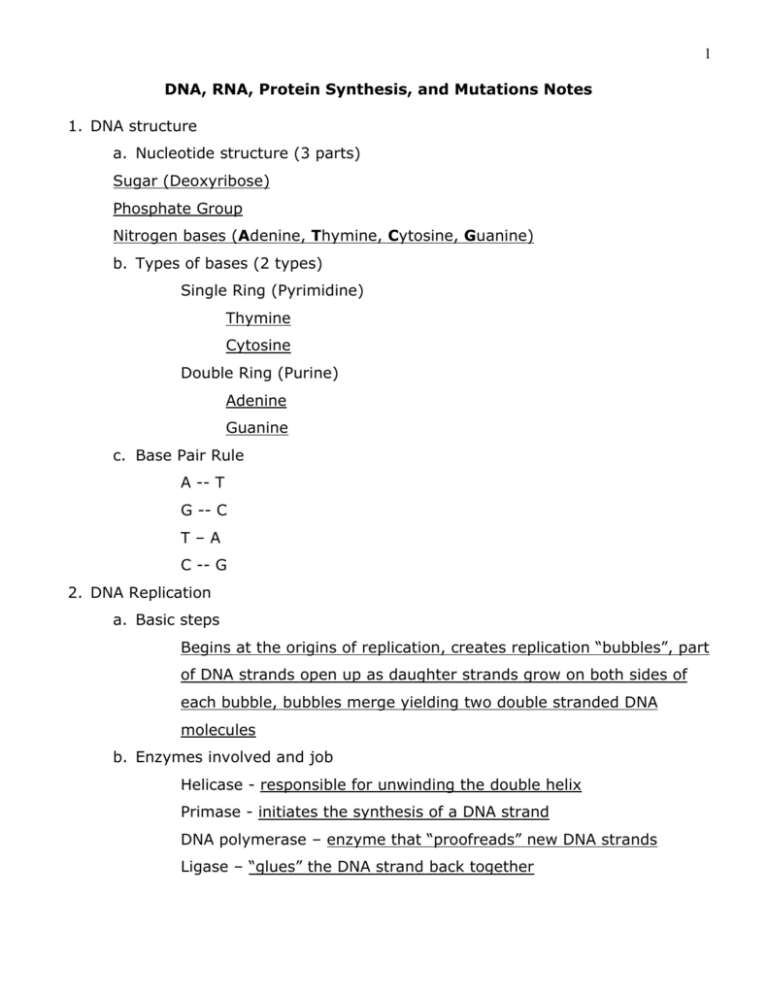DNA, RNA, Protein Synthesis, and Mutations Notes
advertisement

1 DNA, RNA, Protein Synthesis, and Mutations Notes 1. DNA structure a. Nucleotide structure (3 parts) Sugar (Deoxyribose) Phosphate Group Nitrogen bases (Adenine, Thymine, Cytosine, Guanine) b. Types of bases (2 types) Single Ring (Pyrimidine) Thymine Cytosine Double Ring (Purine) Adenine Guanine c. Base Pair Rule A -- T G -- C T–A C -- G 2. DNA Replication a. Basic steps Begins at the origins of replication, creates replication “bubbles”, part of DNA strands open up as daughter strands grow on both sides of each bubble, bubbles merge yielding two double stranded DNA molecules b. Enzymes involved and job Helicase - responsible for unwinding the double helix Primase - initiates the synthesis of a DNA strand DNA polymerase – enzyme that “proofreads” new DNA strands Ligase – “glues” the DNA strand back together 2 3. RNA a. Differences between it and DNA Ribose instead of Deoxyribose as the sugar Uracil instead of Thymine as a nitrogen base Single-stranded instead of double-stranded 4. Protein Synthesis a. Major players and jobs: DNA – molecule that stores heritable genetic information mRNA – (messenger RNA) transcribed from a DNA template 1. Codon – 3-base “word that codes for one amino acid” tRNA – (transfer RNA) translates the 3 letter codons of mRNA to the amino acids that make proteins 2. Anticodon – complementary to a specific codon in mRNA rRNA – (ribosomal RNA) RNA component of ribosomes Amino Acid – building block that makes up proteins b. Steps of Protein Synthesis (in eukaryotes) 1. Translation begins with the attachment of a ribosome and a tRNA to a “start” codon (AUG) 2. The ribosome then moves along the mRNA transcript 3. The polypeptide (many proteins) elongates as an amino acid is added for each codon 4. When the ribosome arrives at a “stop” codon (UAA, UAG, UGA) the polypeptide is released 5. The proteins that are formed determine the appearance and functioning of the cell and of the whole organism c. Protein Synthesis Problems Gene (triplets) ATC GGG TTA CTA Complementary DNA half TAG CCC AAT GAT mRNA (codons) 3 AUC GGG UUA CUA tRNA (anticodons) UAG CCC AAU GAU Amino acids isoleucine glysine leucine leucine 5. Mutations – Heritable changes in genetic material are called mutations. They result from alteration in the nucleotide sequence of DNA, and provide the ultimate source of genetic variation for evolutionary change.








